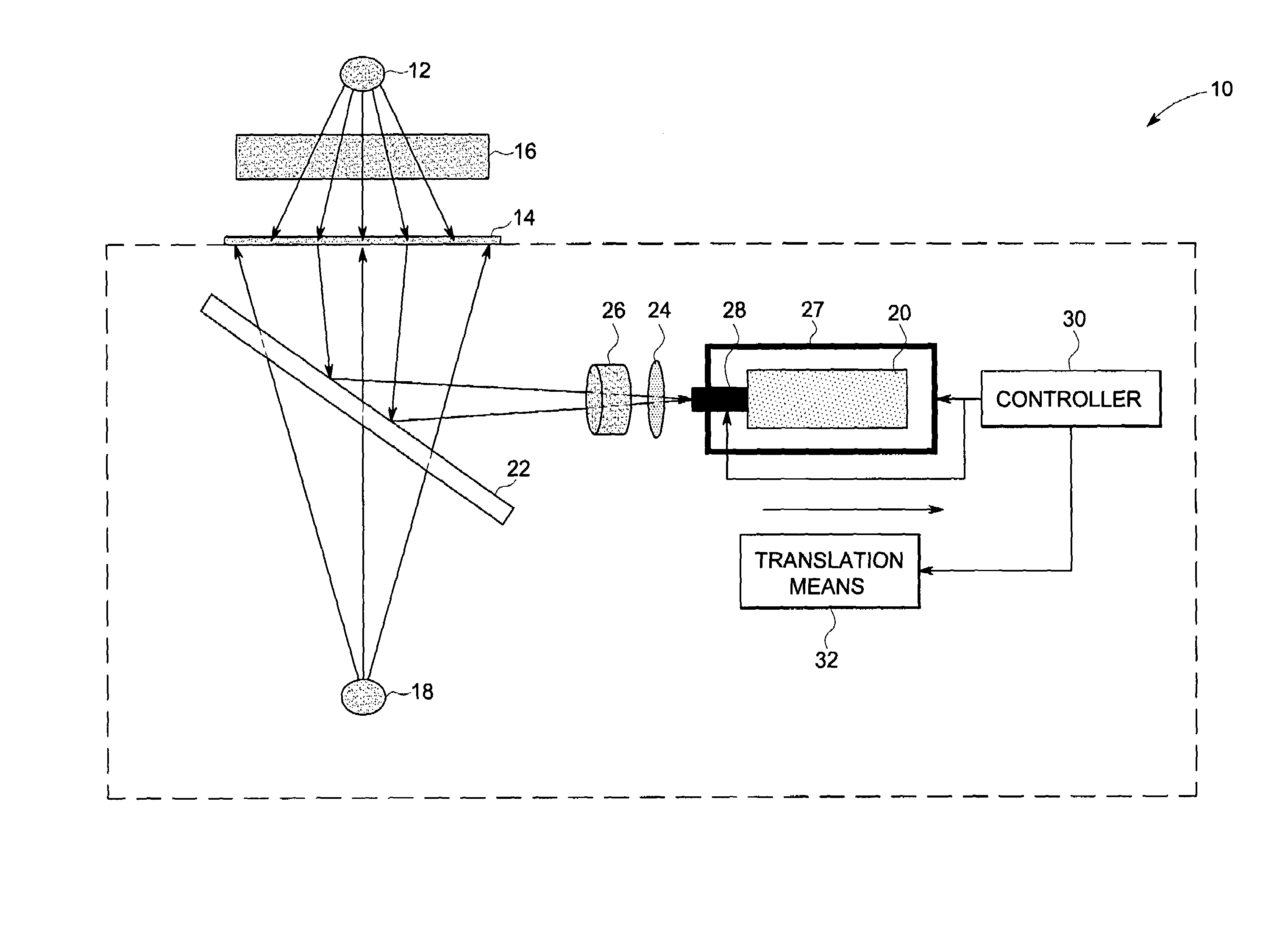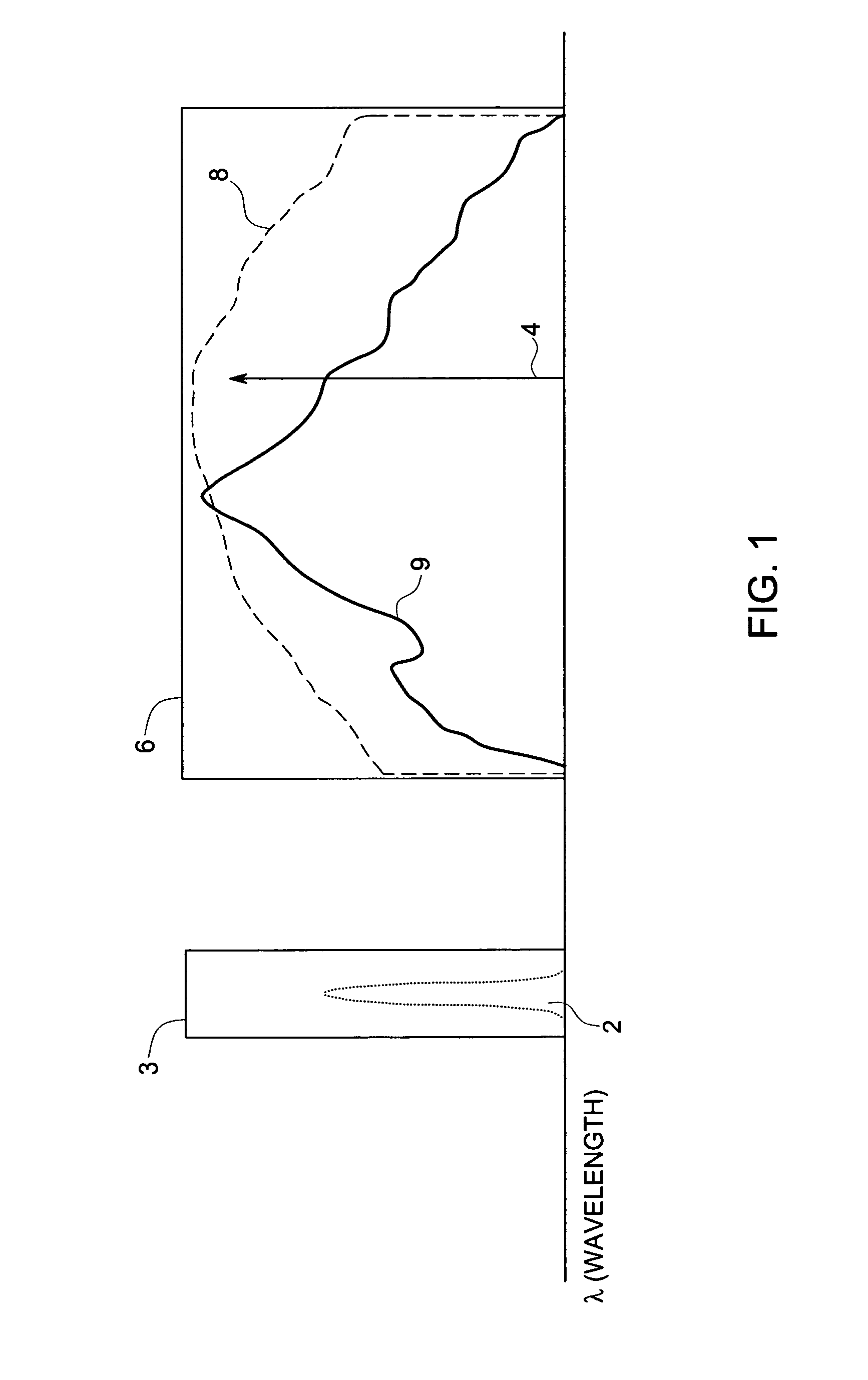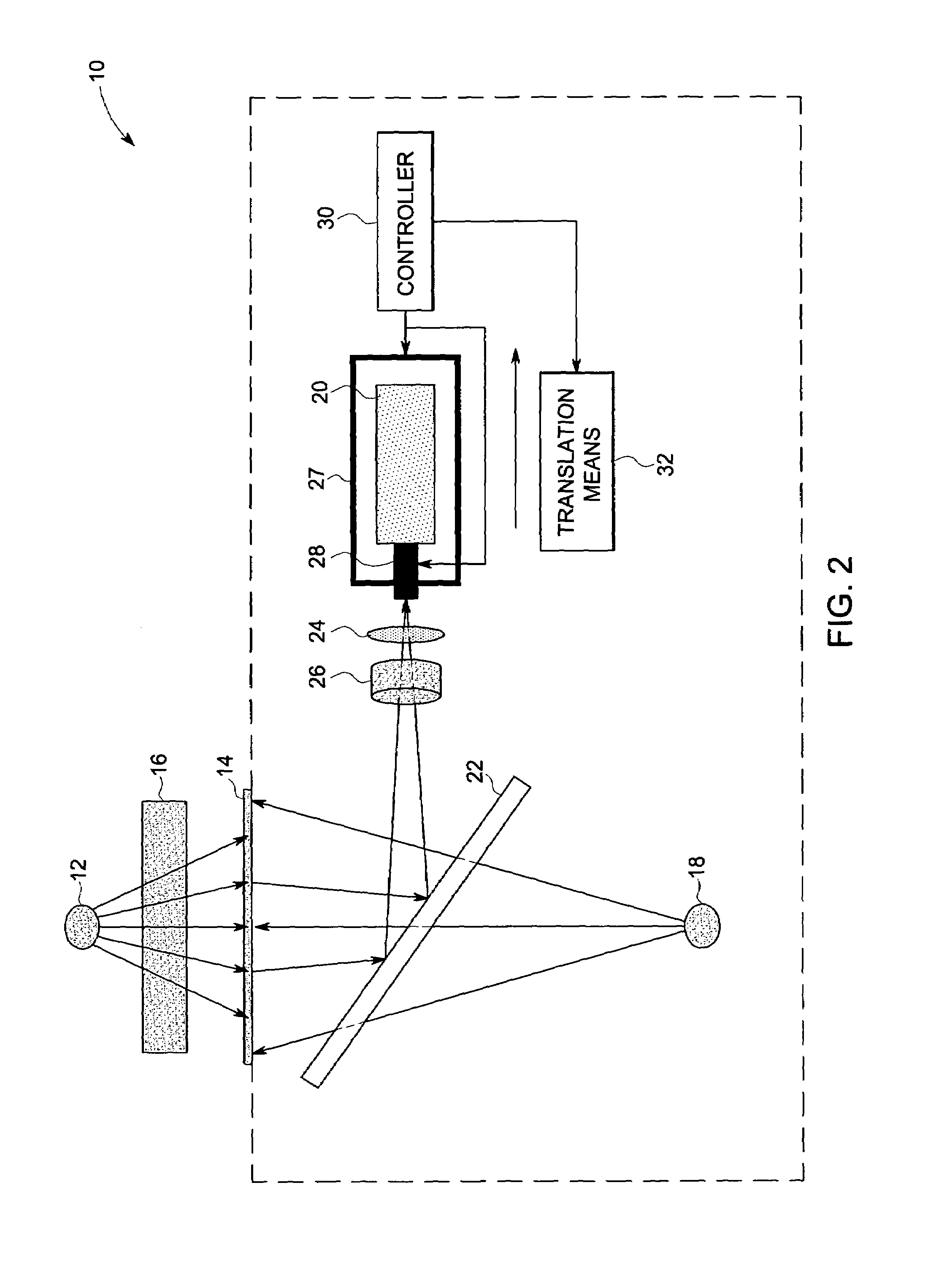Computed radiography systems and methods of use
a radiography and computed technology, applied in the field of computed radiography, can solve the problems of limiting the amount of light that can be collected from the storage phosphor, unable to compensate for non-uniformities, and damage to the imaging plate to a point where it is no longer usabl
- Summary
- Abstract
- Description
- Claims
- Application Information
AI Technical Summary
Benefits of technology
Problems solved by technology
Method used
Image
Examples
Embodiment Construction
[0019]FIG. 1 is a graph illustrating the characteristic stimulation and emission behavior of a typical storage phosphor and the spectra of different stimulating light sources 4 and 8. As may be observed from FIG. 1, the desired stimulated and prompt emission spectra 2 and the stimulating excitation spectral band 6 have non-over lapping or disjoint wavelengths, thereby allowing the emission spectrum 2 (corresponding to the desired stored latent X-ray exposure pattern) to be recovered in the presence of the stimulating energy (envelope 6). Curve 9 shows the characteristic stimulation function for a typical storage phosphor. Conventional CR systems use a narrow band source (typically a laser) with characteristic spectrum 4 (shown through the use of an impulse-like function) to stimulate the storage phosphor to allow easier eventual separation of emission energy 2 in the presence of any stimulating energy 4. The total stimulating energy imparted to the phosphor is proportional to the pr...
PUM
| Property | Measurement | Unit |
|---|---|---|
| wavelength | aaaaa | aaaaa |
| radiation energy | aaaaa | aaaaa |
| area | aaaaa | aaaaa |
Abstract
Description
Claims
Application Information
 Login to View More
Login to View More - R&D
- Intellectual Property
- Life Sciences
- Materials
- Tech Scout
- Unparalleled Data Quality
- Higher Quality Content
- 60% Fewer Hallucinations
Browse by: Latest US Patents, China's latest patents, Technical Efficacy Thesaurus, Application Domain, Technology Topic, Popular Technical Reports.
© 2025 PatSnap. All rights reserved.Legal|Privacy policy|Modern Slavery Act Transparency Statement|Sitemap|About US| Contact US: help@patsnap.com



